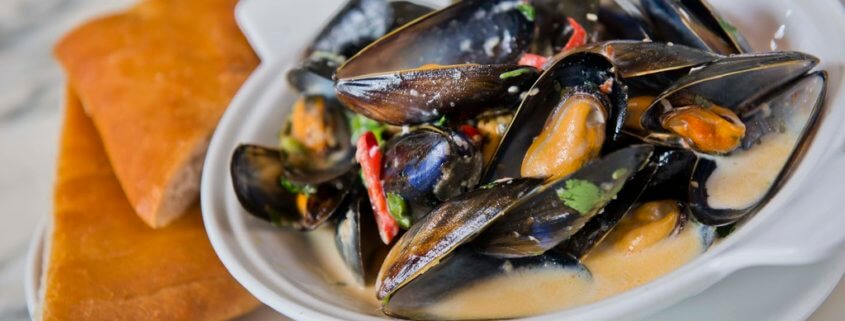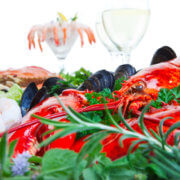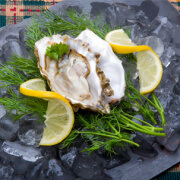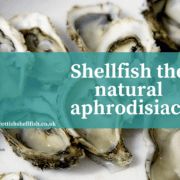National Mussel Day 2018
Fascinating facts about Scotland’s favourite shellfish . . .
Sales of mussels are on the increase, at home and abroad. You can see from our site how popular mussel recipes are and Scottish shellfish is celebrated the world over. Last year (2017) saw the first ever National Mussel Day. Using the hashtag #musselup, the campaign focused on raising the profile of mussels across social media. National Mussel Day was so successful that it’s here to stay. Sunday Oct 7 is National Mussel Day 2018. To celebrate, here are some fascinating facts about one of our most popular shellfish.
Did you know?
A much-loved mollusc
- In Scotland (and across the North Atlantic) the most common mussel is the Blue Mussel (Mytilus Edulis).
- Mussels can live for up to 50 years. We don’t tend to eat them at the end of their lives though! The average age of our mussels ready for consumption is 2.5 to 3 years.
- Male and female mussels are different colours – the male is a creamy white and the female is an orangey colour.
- When it comes to diet, mussels only eat plankton. To extract the plankton, in one day they can filter 65 litres of water.
- Mussels produce liquids which set in seawater to form tough fibres called byssal threads or beards. These threads are five times stronger than a human tendon and can cling to a Teflon surface.
- Mussels can defend themselves from predators such as the dog whelk, and other snails by tying them down with its byssal threads.
- Mussels close their shells when the tide drops so that they don’t dry up when they’re out of the water.
- Other than snails, mussels’ main predators are starfish and seabirds.
- Like the oyster, mussels can also produce pearls. But these are limited to freshwater mussels and are much rarer.
- Although it may look less than pristine, if the mussel shell is covered with barnacles this is usually a good sign that the mussel is wild, fresh and healthy.
History
- Mussels have been used as a food source for more than 20,000 years. And many prehistoric settlements in Scotland have been identified by large mounds of mussel shells close by.
- The first mussel farm dates back to the 8thcentury and was located in France.
Health
- Mussels have the most impressive nutritional profile of all the shellfish. Consumption of mussels can help reduce inflammatory conditions such as arthritis. And the minerals they contain help build immunity.
- Mussels are considered a brain food due to the high levels of vitamin B12 that they contain.
- Mussels are chock full of protein, iron and folic acid. In fact, ounce for ounce, they contain more protein than beef stock.
- They’re healthy in so many ways. 100g of mussels only contains 58 calories!
Cooking
- Mussels have so much water within their shells that you don’t need to add water when you steam them.
- Mussels need to be alive when you cook them. Don’t cook them if the shells are already open and don’t eat them if the shells remain closed after cooking.
- Moules and frites (mussels and chips) is actually the national dish of Belgium, although more often associated with France.
Working up an appetite?
Yes, there’s more to the humble mussel than meets the eye. And is all this talk making you hungry? Don’t forget to check out our recipes and #musselup this October.
Happy National Mussel Day everyone!














